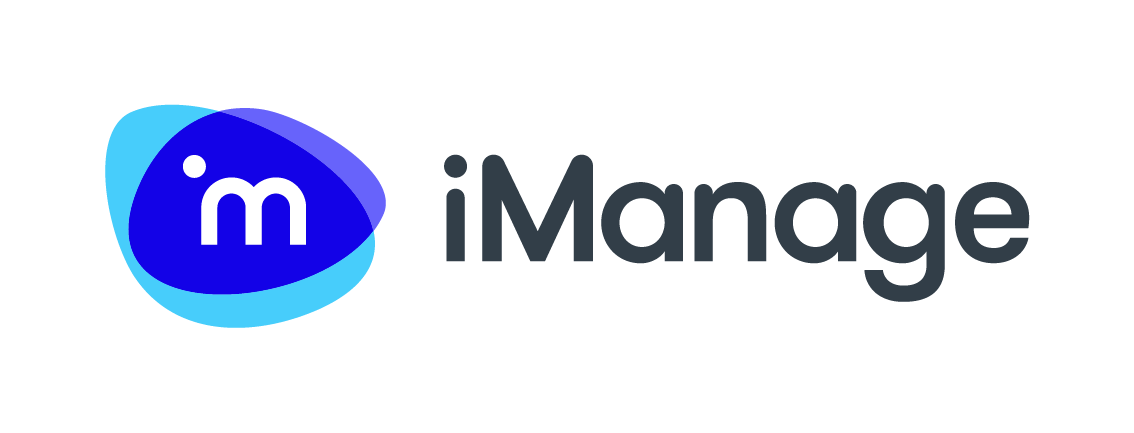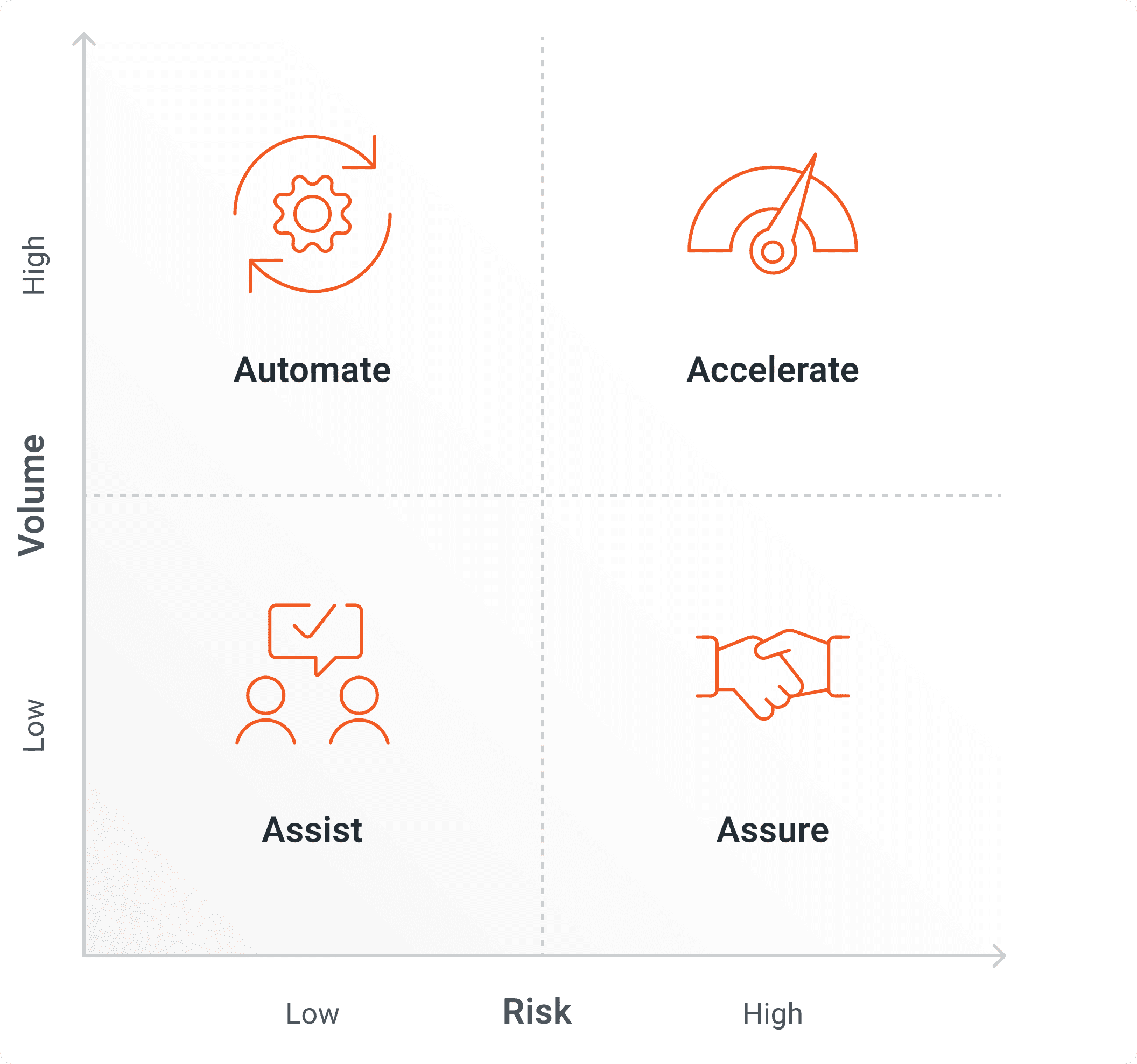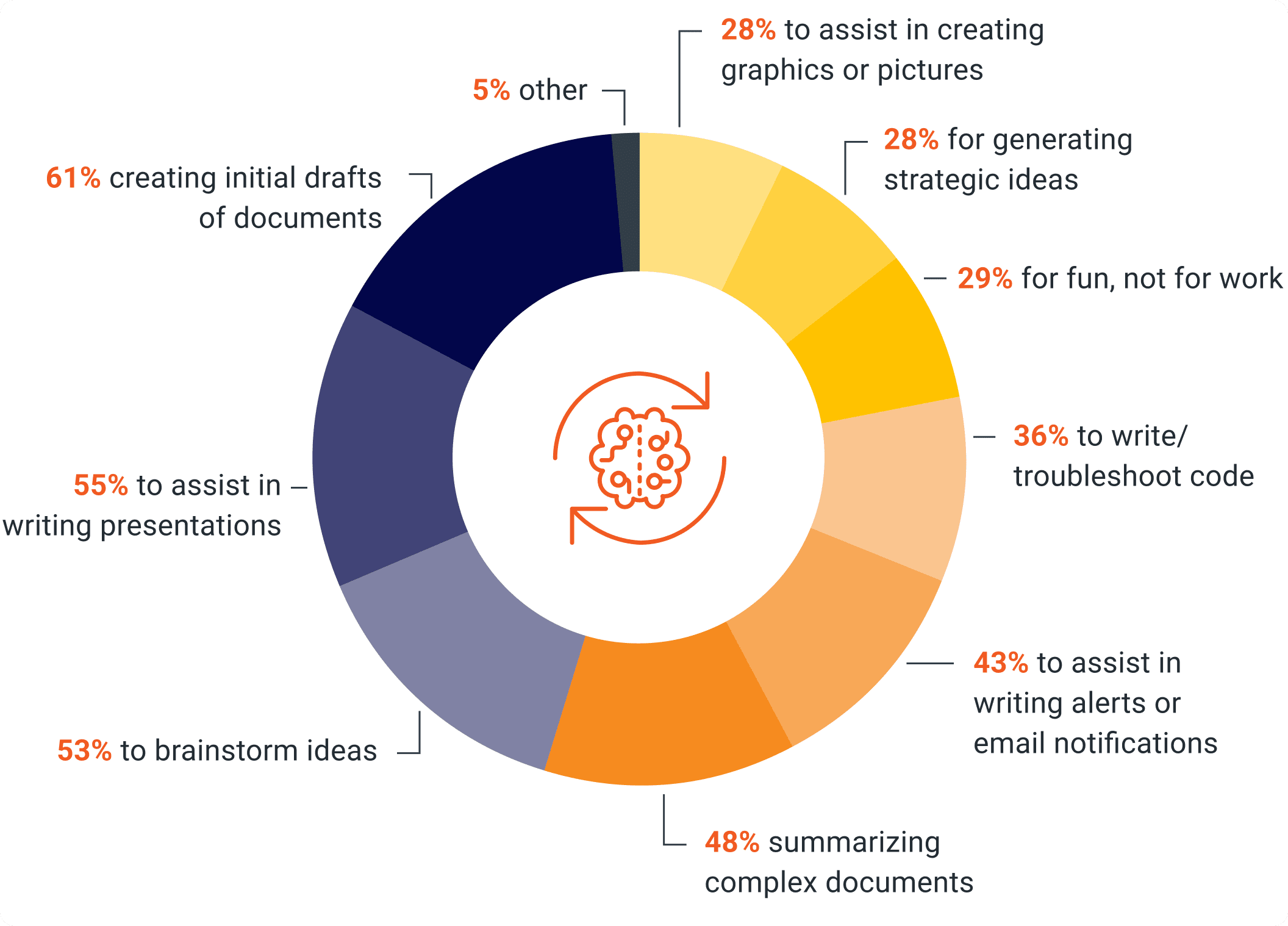The AI path forward for Law firms

What can AI do for legal?
How about removing the day-to-day drudgery so lawyers and legal professionals can focus on higher-satisfaction work and achieve mastery in their profession?
That’s the promise, right? And, yes, we want to increase our productivity as well. And while we are asking, can we make the world a better place? A more just society? We can? Good, let’s have that, too.
The extraordinary promise of generative AI has come just when the longing for more meaningful work is intersecting with workers’ increased pressure for businesses to address societal challenges.
At the 2023 LITLS conference, we saw that economic growth, satisfied clients, tech/lawyer partnerships, and billing/profit implications were lower priorities for legal professionals than we might have anticipated.
Somewhat counterintuitively, many attendees expressed hope that AI would have the greatest impact on the most deeply human elements of their jobs.
This marked shift makes us wonder if knowledge worker enthusiasm for generative AI is being driven more by opportune timing than by the tech itself.
If so, perhaps a personal component underlies the demand of lawyers and other legal professionals for practical business applications that use generative AI.
What clouds the sunny view?
Apprehensions about AI run the gamut...
But the two strongest fears could be placed at opposite ends of the spectrum — that of losing the innovation advantage and that of AI introducing risk or jobs being replaced by new technology. Wanting to be seen as innovation leaders, law firms can be fiercely competitive. They don’t want their rivals getting ahead of them and grabbing the brass ring.
This fear of losing a competitive advantage or passing up the opportunity to be a leader in the industry drives the urgency to embrace generative AI.
But lawyers and other legal professionals also worry about being replaced by AI or having its use introduce risk to the firm. While often fueled by a general lack of understanding, concerns about AI job losses or negative impact on work are very personal. If not addressed, you may find your people resisting beneficial new technology.

Between these polarities, we see anxieties around:
- Managing misguided expectations
- Maintaining confidentiality
- Proving ROI
- Ensuring the provenance of data
And running beneath it all, media hype prompts stakeholders to continually ask what the firm is “doing with AI” — as if it’s an app you can just plug in.
In reality, AI supports a multitude of emerging technologies — some of which can absolutely serve a law firm's needs. But they must be carefully assessed and evaluated.
As for the applicability of AI in the near term, legal leaders struggle with questions about its ROI and risk potential. Reports of so-called "hallucinations" and other ethical considerations are important in the long term but may feel less critical in the current moment.
A thoughtful approach can help keep the uncertainty that remains around how and where AI can be applied, whether it should be applied, its impact on the work to be done, and the value it brings to the legal industry in check.
Building effective AI use cases
Generative AI holds promise, but we need to look beyond the hype.
Legal AI discussions often start with solution language that talks about adopting new technology. But this bypasses the vital first step of speaking in problem language to identify the issue you want to solve.
Clarify problem language by focusing on the jobs to be done. Then use that language to assess whether a tech solution is likely to be successful, and — if so — what that solution might be.
What is the use case and what actions are required to perform that task?
Simplexico founder Uwais Iqbal advocates a foundational understanding of the different technical approaches underpinning AI, as well as the use cases, benefits, risks, and opportunities of each.
Iqbal breaks this down into a discrete set of actions, not unlike a recipe, that all use AI:
Extract pulls specific information from the text of a document, like a contract, using AI.
Compare identifies similarities and differences between the text in specific passages and works within or across documents.
Organize groups similar or related texts or documents together.
Label assigns a label for a piece of text or a document based on classification types or a predefined taxonomy.
Find queries a large collection of texts to find relevant information, such as cases.
Draft can be used to generate text, such as a contract clause.
Weighing volume and risk
The next step in the process is to think about the end-user function and where it sits on the volume/risk spectrum.
“In terms of policies around the use of Generative AI, most firms seem to have no policy at all or have simply issued warnings or ethics tips on its use. Just 7% actively block GAI sites — and 2% actively encourage its use!”
Make the AI payoff clear
Law firms should take a long view of AI as an investment in creating intellectual capital.
In the short term, adopt new technology in lower profit activities first, where the stakes are not high. Once proven, you can apply elsewhere.
Focusing AI use cases on practical improvements, such as creating savings in non-billable activities, is a great way to start. This ensures you are not distracting top-billing attorneys from doing their work before you can offer them a clear payoff.
Keep references to impact positive to mitigate concerns about AI taking away jobs.
Emphasize the potential for AI to ease the drudgery of mundane tasks.
Watch people who are working long hours and identify pieces of their workflow that could be augmented or enhanced with AI
Find opportunities to increase their efficiency and you open the door for them to take on more interesting work.
Help people balance the daily grind with higher-value activities so they can do more work that is meaningful to them.
Embrace AI with care
There is no doubt that organizations are experiencing pressure to act, despite the uncertainties, but that does not override the necessity of proceeding with caution.
- Introduce AI into your law practice thoughtfully and pragmatically.
- Ground discussions about AI firmly in the problem you are trying to solve.
- Do not be distracted by window dressing or promotional build-up.
Whether you are building a strategy for automation of repetitive tasks or contemplating more advanced processes using generative AI, your commitment to following best practices is essential to a successful outcome.
Evaluate the job to be done.
It is critical to have a foundational understanding of your key content, data, processes, and workflows before considering an AI solution.
A solid foundation of curated and governed content and a knowledge-friendly culture are core requirements for leveraging generative AI effectively.
Any attempt to use AI without building this foundation is likely to prove ineffective or risky.
In “Knowledge is the new global currency,” iManage explains the role of knowledge maturity in leveraging AI effectively and lays the groundwork for achieving the higher-order business outcomes your organization is reaching for.
Finally, be mindful that generative AI is a paradigm shift.
When your firm is ready to embrace the technology, be prepared to explain AI, and your goals for using it, more than once.
That said — having built the foundation for its effective use — your probability of early success in meeting your business objectives is much improved.
iManage Commentary
Knowledge is the new global currency
iManage analysis of the Knowledge Work Maturity Model.


